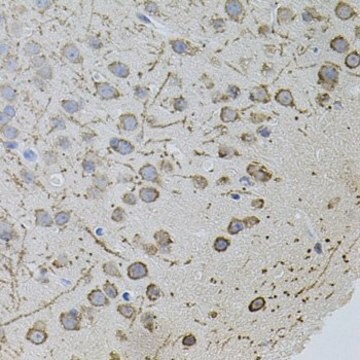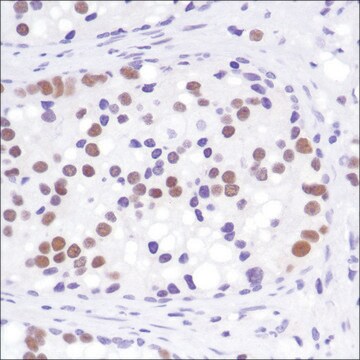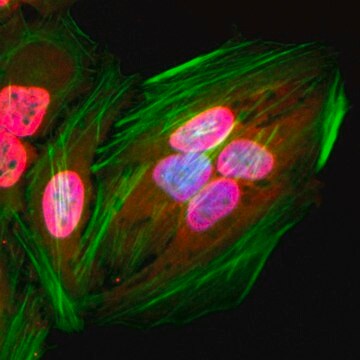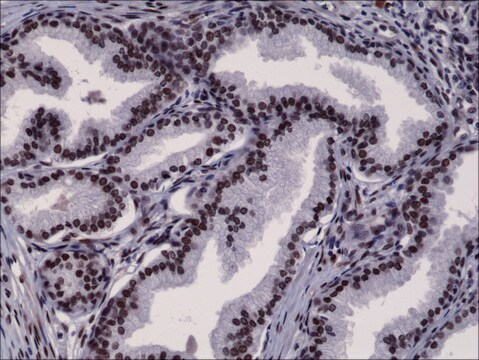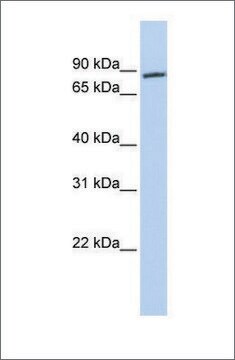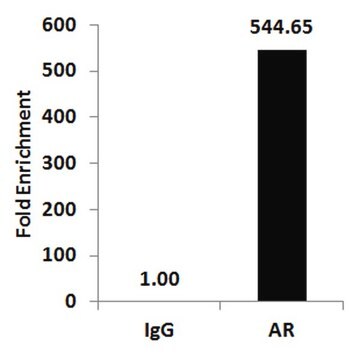A9853
Anti-Androgen Receptor antibody produced in rabbit
affinity isolated antibody, buffered aqueous solution
Synonym(s):
Androgen Receptor Antibody, Androgen Receptor Antibody - Anti-Androgen Receptor antibody produced in rabbit, Anti-AR
Select a Size
Select a Size
About This Item
Recommended Products
biological source
rabbit
Quality Level
conjugate
unconjugated
antibody form
affinity isolated antibody
antibody product type
primary antibodies
clone
polyclonal
form
buffered aqueous solution
mol wt
antigen 110 kDa (additional band may be observed at 45 kDa)
species reactivity
rat, human
technique(s)
immunohistochemistry (formalin-fixed, paraffin-embedded sections): 20-40 μg/mL using microwave-pretreated human prostate tissue sections
immunoprecipitation (IP): 5-10 μg using human MCF7 cell lysate ( 250 μg)
microarray: suitable
western blot: 1-2 μg/mL using whole extract of rat brain
General description
Anti-Androgen Receptor specifically recognizes the human androgen receptor protein (110 kDa). An additional band may be observed at 45 kDa. The antibody cross-reacts with rat androgen receptor.
Specificity
Immunogen
Application
Western Blotting (1 paper)
Physical form
Disclaimer
Not finding the right product?
Try our Product Selector Tool.
Storage Class
10 - Combustible liquids
wgk_germany
WGK 2
flash_point_f
Not applicable
flash_point_c
Not applicable
ppe
Eyeshields, Gloves, multi-purpose combination respirator cartridge (US)
Choose from one of the most recent versions:
Certificates of Analysis (COA)
Don't see the Right Version?
If you require a particular version, you can look up a specific certificate by the Lot or Batch number.
Already Own This Product?
Find documentation for the products that you have recently purchased in the Document Library.
Customers Also Viewed
Our team of scientists has experience in all areas of research including Life Science, Material Science, Chemical Synthesis, Chromatography, Analytical and many others.
Contact Technical Service
